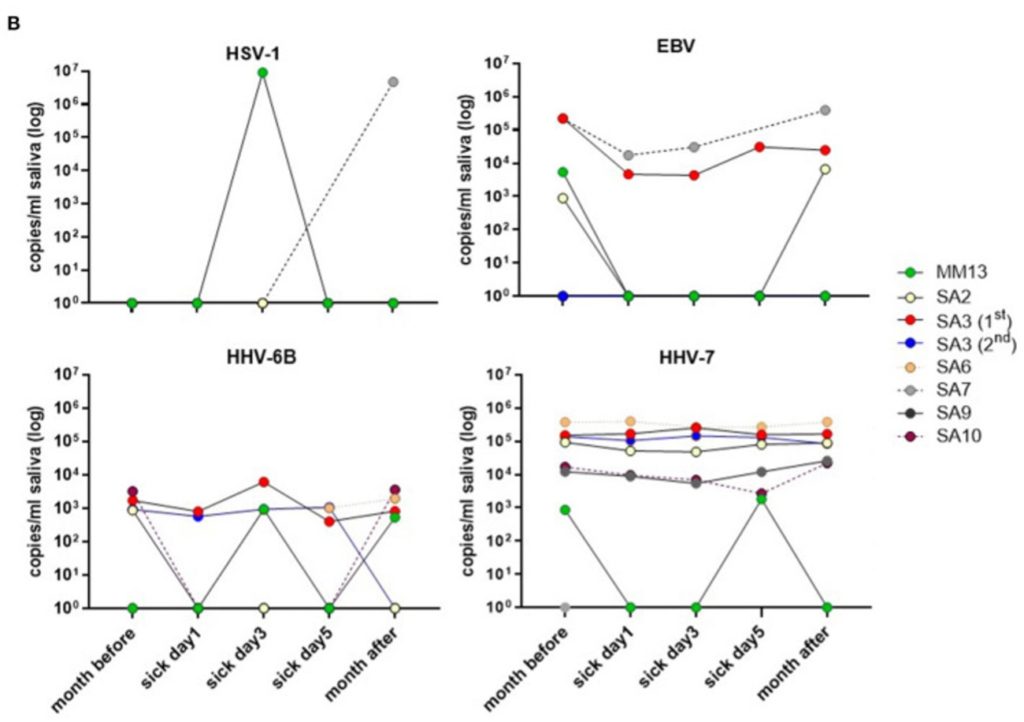Lee et al of the London School of Hygiene and Tropical Medicine conducted a longitudinal study aimed to test whether levels of DNA from each of the human herpesviruses were higher in people with myalgic encephalomyelitis/chronic fatigue syndrome (ME/CFS) than in matched healthy controls subjects, and if the levels of DNA were greater at times that ME/CFS symptoms were more severe. ME/CFS was defined by the Canadian Consensus Criteria (Carruthers et al. 2002).
The researchers collected saliva DNA every month and on the 1st, 3rd, and 5th day of any disease exacerbation. Three groups of patients were studied: those mildly or moderately affected (ME/CFS_MM, n=14), those severely afflicted (ME/CFS_SA, n=16), and healthy controls (HC), n=16.

Viral load DNA in saliva in different ME/CFS patients on day 1, 3, and 5 of episodes when participant experienced an acute worsening of disease symptoms.
Compared to HC, HHV-6B viral DNA concentrations were on average 6.2-fold higher in ME/CFS_SA patients, with significant differences at months, 1 (P=0.039), 3 (P=0.030), and 5 (0.029). HHV-6B and HHV-7 viral loads also correlated with disease exacerbation in ME/CFS_SA patients, particularly with symptoms of pain, cognition, and autonomic dysfunction. In some people, viral loads in saliva waxed and waned with symptoms; in other people, viral loads were more constant.
While this report adds to the evidence showing that HHV-6B and HHV-7 are associated with ME/CFS, and are reactivated more often during times of increased symptoms, it is still unclear whether herpesvirus reactivation plays a causal role in ME/CFS or is merely an epiphenomenon reflecting immune dysfunction. Further long-term, longitudinal, large scale, and controlled studies are needed to better understand the association of reactivated HHV-6B and HHV-7 with ME/CFS.
Read the full article: Lee 2021

